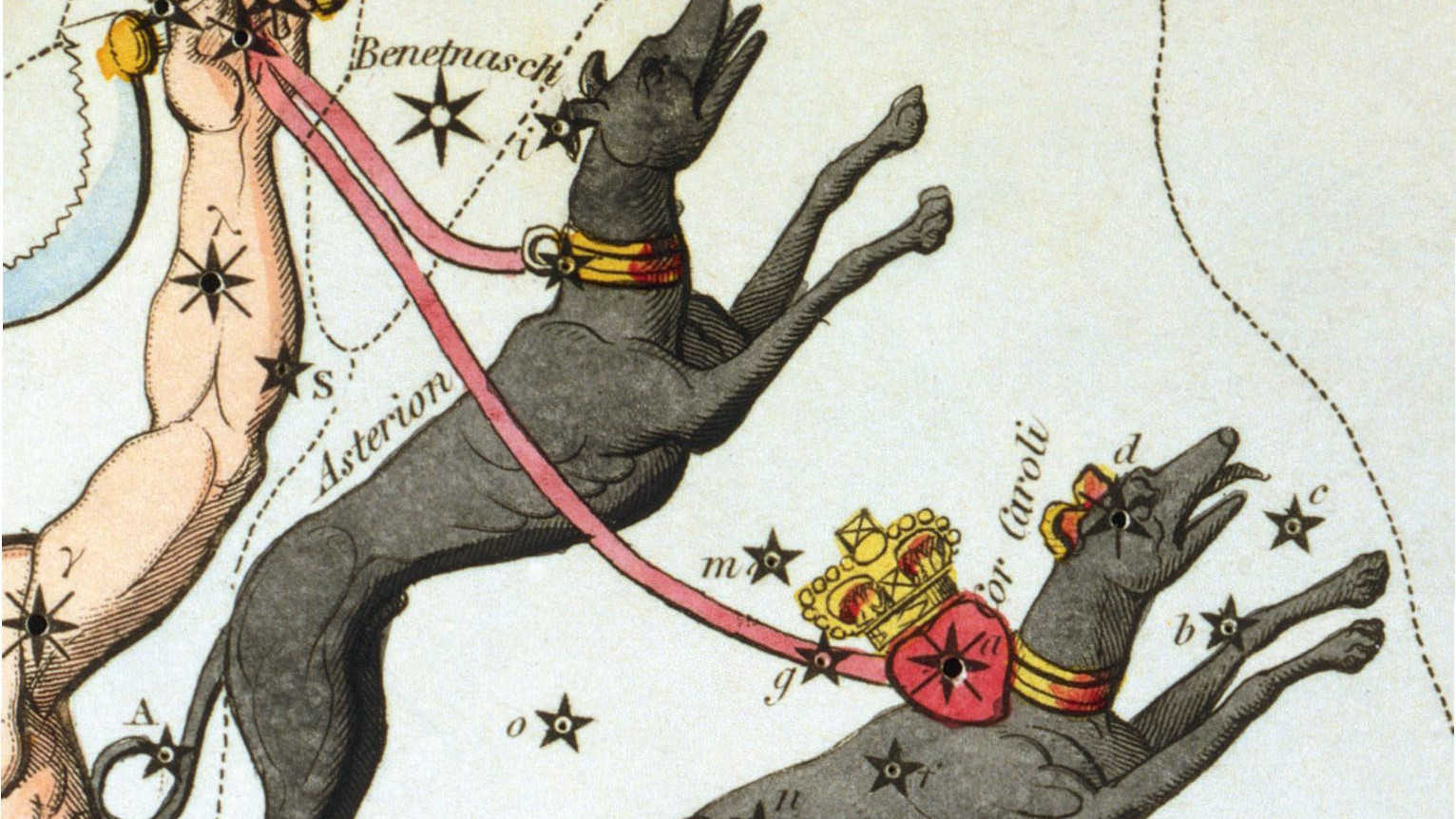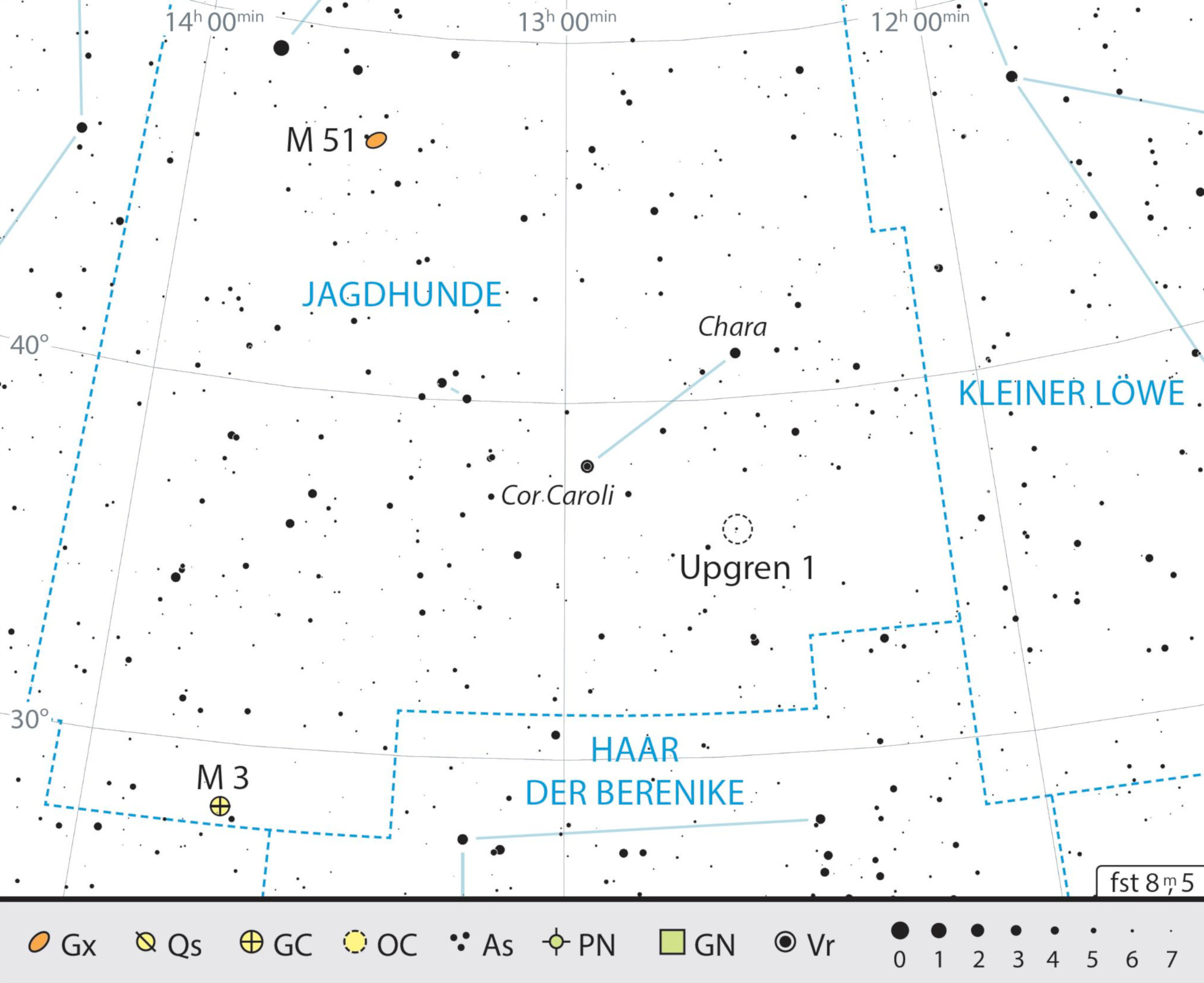Canes Venatici
This constellation may seem rather unimpressive. But this makes the whirlpool galaxy M51 all the more spectacular; a collision of galaxies seen from above.
 A former herdsman became known as Boötes, who lets his two hunting dogs Asterion and Chara loose on Ursa Major, the Great Bear.
A former herdsman became known as Boötes, who lets his two hunting dogs Asterion and Chara loose on Ursa Major, the Great Bear.Canes Venatici is not a classical constellation of antiquity because it was only introduced in around 1690, when it appeared in the celestial atlas published by Johannes Hevelius. In visual representations it is portrayed as two hunting dogs belonging to the neighbouring constellation Boötes, who is hunting for Ursa Major, the Great Bear. Therefore, the constellation of Canes Venatici can be found directly below the handle of the Big Dipper, which is part of Ursa Major.
The originally dog-free Boötes probably only became a dog owner because of errors in translating the name of the star μ Boötis. Ptolemy’s best-known work, Almagest, was translated from Greek into Arabic around the year 850, and then later in the 12th century it was translated into Latin. What was originally "shepherd's crook" became "staff with dogs". The German cartographer Peter Apian was probably the first to draw Boötes with his faithful companions in 1533. Hevelius later depicted the hunting dogs – Asterion and Chara – as a separate constellation.
King Charles' heart
Canes Venatici, which is the Latin name of the hunting companions, is an inconspicuous constellation due to the absence of any eye-catching star patterns, which is why the constellation is always represented on star charts only by a connecting line between the stars α and β CVn. The latter is called Chara, the former, α CVn, is known as Cor Caroli which means Charles's Heart.
The name reminds us of the English kings Charles I and Charles II. With the execution of Charles I in 1649, the monarchy paused for a short while. When Charles II arrived in a jubilant procession in London in May 1660 to ascend the throne and restore the monarchy, α CVn is said to have been shining especially brightly. In 1673, the constellation Cor Caroli Regis Martyris, the heart of Charles the royal martyr, first appeared beside Canes Venatici. It was represented by a heart with a royal crown. Today, only the name of the brightest star α CVn reminds us of this former constellation.
 Outline map of the constellation of Canes Venatici with our observing recommendations. J. Scholten
Outline map of the constellation of Canes Venatici with our observing recommendations. J. ScholtenGalaxy season
The spring is known as galaxy season, and M51 is undoubtedly one of the highlights, not only of this constellation. Here you can look at a collision of galaxies, as viewed from above. Under dark skies, the centres of the two galaxies are even visible through binoculars. With more Messier galaxies and even more NGC galaxies, if you’re a fan of observing distant galaxies, you’ll have fun in Canes Venatici. Other targets for small instruments are the M3 globular cluster and the curious star cluster Upgren 1.
Author: Nico Schmidt / Licence: Oculum-Verlag GmbH
